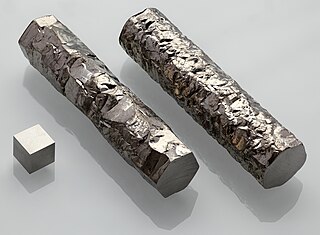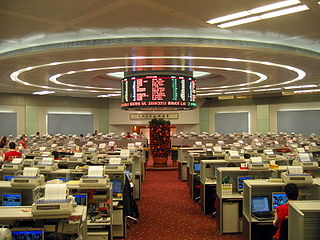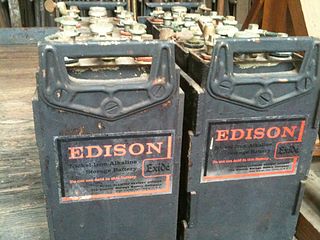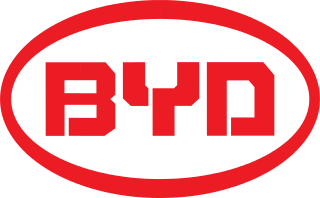China Zirconium Limited (China Zirconium) (HKG:0395) is engaged in the research, development, manufacturing, and sale of a range of zirconium chemicals, electronic materials (with zirconium), electronic ceramics, alternative energy materials, and rechargeable batteries. Its new energy materials products, including nickel hydroxide and hydrogen-storage alloy powder, are electrode materials for nickel metal hydride (NiMH), and nickel cadmium and lithium ion batteries (NiCd) batteries. As of 2009, China Zirconium Limited had an annual production capacity of over 40,000 tons of various types of zirconium chemicals and 1,500 tons of new energy materials. Its products are offered under the Long Jing trademark in the People's Republic of China, Japan, United States, and Hong Kong. Its business segments include zirconium compounds, electronic materials and electronic ceramics, new energy materials, and rechargeable batteries.

Zirconium is a chemical element with the symbol Zr and atomic number 40. The name zirconium is taken from the name of the mineral zircon, the most important source of zirconium. It is a lustrous, grey-white, strong transition metal that closely resembles hafnium and, to a lesser extent, titanium. Zirconium is mainly used as a refractory and opacifier, although small amounts are used as an alloying agent for its strong resistance to corrosion. Zirconium forms a variety of inorganic and organometallic compounds such as zirconium dioxide and zirconocene dichloride, respectively. Five isotopes occur naturally, three of which are stable. Zirconium compounds have no known biological role.

Alternative energy is any energy source that is an alternative to fossil fuel. These alternatives are intended to address concerns about fossil fuels, such as its high carbon dioxide emissions, an important factor in global warming. Marine energy, hydroelectric, wind, geothermal and solar power are all alternative sources of energy.

An alloy is a combination of metals or a combination of one or more metals with other non-metallic elements. For example, combining the metallic elements gold and copper produces red gold, gold and silver becomes white gold, and silver combined with copper produces sterling silver. Elemental iron, combined with non-metallic carbon or silicon, produces alloys called steel or silicon steel. The resulting mixture forms a substance with properties that often differ from those of the pure metals, such as increased strength or hardness. Unlike other substances that may contain metallic bases but do not behave as metals, such as aluminium oxide (sapphire), beryllium aluminium silicate (emerald) or sodium chloride (salt), an alloy will retain all the properties of a metal in the resulting material, such as electrical conductivity, ductility, opaqueness, and luster. Alloys are used in a wide variety of applications, from the steel alloys, used in everything from buildings to automobiles to surgical tools, to exotic titanium-alloys used in the aerospace industry, to beryllium-copper alloys for non-sparking tools. In some cases, a combination of metals may reduce the overall cost of the material while preserving important properties. In other cases, the combination of metals imparts synergistic properties to the constituent metal elements such as corrosion resistance or mechanical strength. Examples of alloys are steel, solder, brass, pewter, duralumin, bronze and amalgams.
China Zirconium was listed on the Hong Kong Stock Exchange on 28 October 2002. It started its operations in 1977 and is based in Yixing, Wuxi, Jiangsu Province. [1] In 2001, it was ranked as the largest zirconium chemicals exporter in the PRC.

The Stock Exchange of Hong Kong is a stock exchange based in Hong Kong. It is Asia's third-largest in terms of market capitalization behind the Tokyo Stock Exchange and Shanghai Stock Exchange, and the fourth single largest stock market in the world. As of 2018, it has 2,315 listed companies with a combined market capitalization of HK$29.9 trillion. It is reported as the fastest growing stock exchange in Asia.

Yixing is a county-level city with a population of 1.24 million administrated under the prefecture-level city of Wuxi in southern Jiangsu province, People's Republic of China, and is part of the Yangtze River Delta. The city is known for its traditional Yixing clay ware tea pots.

Wuxi is a city in southern Jiangsu province, China. The city borders two other large cities, Changzhou to the west and Suzhou to the east, and borders Zhejiang Province as well in the south. It also covers a coastline of the Yangtze River in the north and two separate coasts of Lake Tai; for this, it has been called the "Pearl of Lake Tai" (太湖明珠). Wuxi is noted for its modern industry and commerce, along with its resorts around Lake Tai. Notable locations within Wuxi include Jichang Garden and Yuantouzhu.














